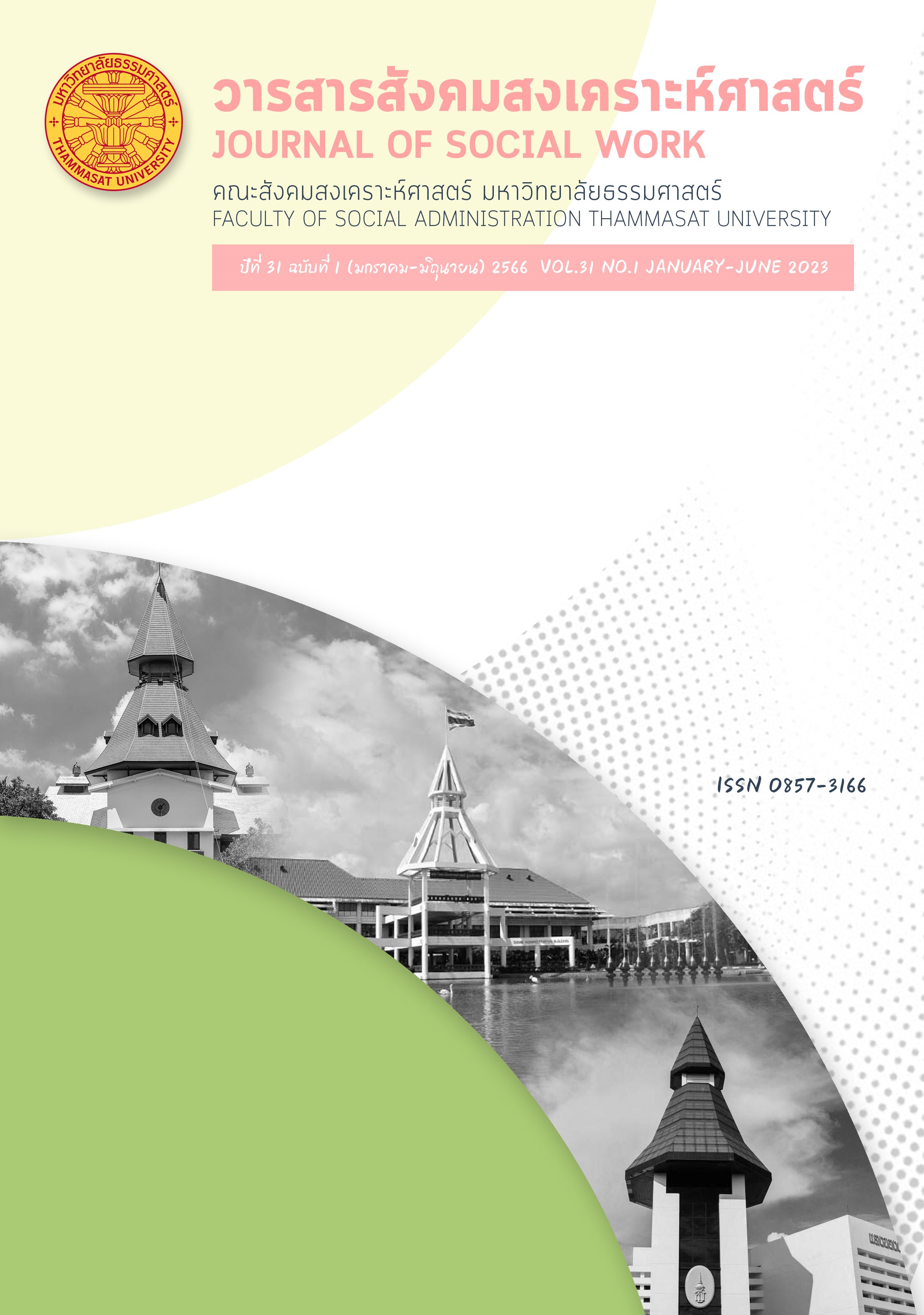Kammasshrattha: The Behavioral Change of People in Phatthalung Province
Keywords:
Kammasshrattha, Behavior change, BehaviorAbstract
The objectives of this qualitative research are as follows: 1. To study the concept of behavioral change theory 2. To study Kammashrattha for behavioral change theory 3. To integrate Kammashrattha concept in behavioral change 4. To introduce knowledge of Kammashrattha: Changing the Behavior of People in Phatthalung Province. The key informants were 15 experts. The researcher used purposive sampling, in-depth interviews and focus group discussion as methods to analyze and synthesize data to present the knowledge body in the form of a model.
The results showed that the concept of behavioral change theory attempts to change the mindset and behaviors to deal with stimuli, including physical, verbal, mental and social factors through purposeful strategies. It is necessary to use intelligence in assessment, and emotional control, and to apply cognitive skills and systematic inspection and management in solving problems and fixing emotions for behavioral change. In addition, the integration of the Kammashrattha concept into behavioral change theory is crucial because the former is able to develop wisdom, mindfulness and well-rounded people who are able to successfully solve problems according to cause and effect. Specifically, the Kammashrattha concept consists of the 12 principles of karma (the principle of action according to the factors of awareness in practice). For example, the principle of systematic thinking; the principle of Tri-Sikkha (self-development); the principle of Pawana (adaptation). These principles allow people to agree, accept, realize, learn, adapt and practice with mindfulness and awareness in each given situation. As a result, people can live a balanced life. The knowledge is, therefore, represented in the "SATTHA Model" composed of the six essential components of S = Surrounding, A- Adapt, T = Thinking, T- Training, H = Head to hand, and A = Attitude.
References
จำเรียง กำเนิดโทน. (2560). ความเชื่อเรื่องกรรมและการให้ผลของกรรม ตามหลักคำสอนในพระพุทธศาสนาเถรวาท. วารสารปรัชญาปริทรรศน์, 22(2), 86-97
ชำนาญ วงรัศมีเดือน. (2562). การจัดการพฤติกรรมมนุษย์ตามแนวจริตในพระพุทธศาสนา. วารสารสันติศึกษาปริทรรศน์ มจร, 7(3), 766-778.
ธีรวุฒิ นิลเพ็ชร. (2562). สภาพการณ์ความรุนแรงในครอบครัวและการพัฒนาบทบาทหน้าที่ของตำรวจในการรับมือปัญหาความรุนแรง: ศึกษาเฉพาะกรณีกองบังคับการตำรวจนครบาล 9. วารสารพยาบาลตำรวจ, 11(2), 326-338.
บุรฉัตร จันทร์แดง. (2562). ปัจจัยที่มีผลต่อการเปลี่ยนแปลงพฤติกรรม. วารสารวิชาการธรรมทรรศน์, 19(4), 235-244.
บัวบุษรา อัครศรุติพงศ์. (2560). บูรณาการความเชื่อเรื่องกรรมและผลของกรรม ในพุทธปรัชญาเถรวาทด้วยมหากัมมวิภังสูตร. วารสารพุทธมัคค์ ศูนย์วิจัยธรรมศึกษา สำนักเรียนวัดอาวุธวิกสิตาราม, 2(1), 43-51.
พระสุพิทักข์ โตเพ็ง. (2561). ศรัทธาในหลักธรรมคำสั่งสอนทางพระพุทธศาสนาของพุทธศาสนิกชนยุคโลกาภิวัตน์. รัฐประศาสนศาสตรดุษฎีบัณฑิต, มหาวิทยาลัยชินวัตร.
พระศรีคัมภีรญาณ (สมจินต์ วันจันทร์). (2564). จริยศาสตร์ในคัมภีร์พระพุทธศาสนา. วารสารศิลปะการจัดการ, 5(2), 540-543.
พระมหาสาคร วรธมฺโมภาโส. (2560). การศึกษาเชิงวิเคราะห์กฎแห่งกรรมที่ปรากฏในอรรถกถาธรรมบท. วารสารพุทธศาสตร์ศึกษา, 8(2), 11-22.
สมเด็จพระพุทธโฆษาจารย์ (ป.อ.ปยุตฺโต). (2561). วิธีคิดตามหลักพุทธธรรม. ซีเอ็ดบุ๊ค สำนักพิมพ์ : ศยาม.
อุทิศ บุญช่วย. (2560). สาเหตุและแนวโน้มของการเข้ารับการสงเคราะห์ในสถานสงเคราะห์คนชราของรัฐ. สังคมศาสตร์มหาบัณฑิต, สาขาวิจัยประชากรสังคม, บัณฑิตวิทยาลัย มหาวิทยาลัยมหิดล.
Lazarus, R. & Folkman, S. (1984). Stress, Appraisal And Coping. New york : Spriger Publishing company.
se-ed ข่าวออนไลน์. สืบค้นเมื่อ 12 กันยายน 2564. จาก https://m.se-ed.com/Product/Tags/10209.
Downloads
Published
How to Cite
Issue
Section
License
Copyright (c) 2023 Journal of Social Work

This work is licensed under a Creative Commons Attribution-NonCommercial-NoDerivatives 4.0 International License.
The manuscripts published in the Social Work Journal is the copyright of the Social Work Journal, Thammasat University
Any article or opinion appeared in the Social Work Journal will solely be under the responsibility of the author The Faculty of Social Administration, Thammasat University and the editors do not need to reach in agreement or hold any responsibility.



